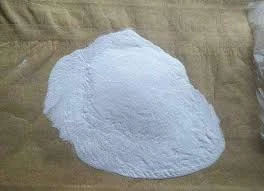The Role of Additives in Enhancing Putty Performance
Putty, a versatile material used in various construction and repair applications, owes much of its effectiveness to the inclusion of specific additives. These substances significantly enhance the physical and chemical properties of putty, leading to improved adhesion, workability, and durability. Understanding the role of additives in putty formulations can help manufacturers produce higher quality products that meet the stringent demands of modern construction.
The Role of Additives in Enhancing Putty Performance
Another crucial function of additives is to enhance the workability of putty. Additives such as plasticizers and surfactants are incorporated to improve the viscosity and flow properties of the putty. Plasticizers, for instance, increase the flexibility and spreadability of the material, making it easier to apply and finish smoothly. Surfactants, on the other hand, help to reduce surface tension, allowing for easier mixing and improved integration of the constituents within the putty. This results in a product that is not only easier to use but also yields a finer finish, crucial for achieving aesthetically pleasing results in decorative applications.
additive for putty

Furthermore, the addition of specific fillers to putty can significantly impact its mechanical properties. Fillers such as talc, silica, and calcium carbonate are often used to enhance the strength and body of the putty. These materials provide bulk, improve the texture, and contribute to the overall stability of the putty mixture. For instance, adding silica not only increases the strength but also helps prevent shrinkage as the putty dries, which is critical for achieving a smooth and level surface.
Additionally, additives play a pivotal role in altering the drying time and curing process of putty. Catalysts and retarders are often included to control these aspects. Catalysts, like methyl ethyl ketone peroxide, speed up the curing process, allowing for quicker application and turnaround times on projects. Conversely, retarders can be used to prolong the working time, giving applicators sufficient time to adjust and perfect their work, especially in larger or more intricate jobs.
Moreover, environmental factors and user safety considerations have led to the development of various eco-friendly additives. With increasing awareness of environmental issues, many manufacturers now focus on producing low-VOC (volatile organic compound) putties by incorporating biodegradable additives. These formulations not only meet regulatory standards but also contribute positively to indoor air quality, making them a safer choice for both applicators and end-users.
In conclusion, the incorporation of additives in putty formulations significantly enhances its performance characteristics, making it more effective for a ranged of applications. By improving adhesion, workability, mechanical strength, drying times, and environmental safety, manufacturers can create high-quality putties that meet the diverse needs of modern construction and repair tasks. As research continues and technology advances, the development of innovative additives will undoubtedly lead to even more efficient and sustainable putty products, further enhancing their role in the construction industry.
-
Rdp Powder: Key Considerations for Wholesalers in the Building Materials IndustryNewsJul.08,2025
-
Key Considerations for Wholesalers: Navigating the World of Hpmc - Based ProductsNewsJul.08,2025
-
Hpmc Detergent: Key Considerations for WholesalersNewsJul.08,2025
-
Key Considerations for Wholesalers: China Hpmc For Tile Adhesive, Coating Additives, Concrete Additives, and MoreNewsJul.08,2025
-
Crucial Considerations for Wholesalers: Navigating the World of Construction MaterialsNewsJul.08,2025
-
Key Considerations for Wholesalers Sourcing Additive For Cement, Additive For Concrete, Additive For Putty from Additive Manufacturer Shijiazhuang Gaocheng District Yongfeng Cellulose Co., Ltd.NewsJul.08,2025




